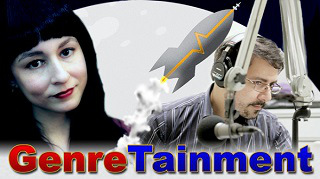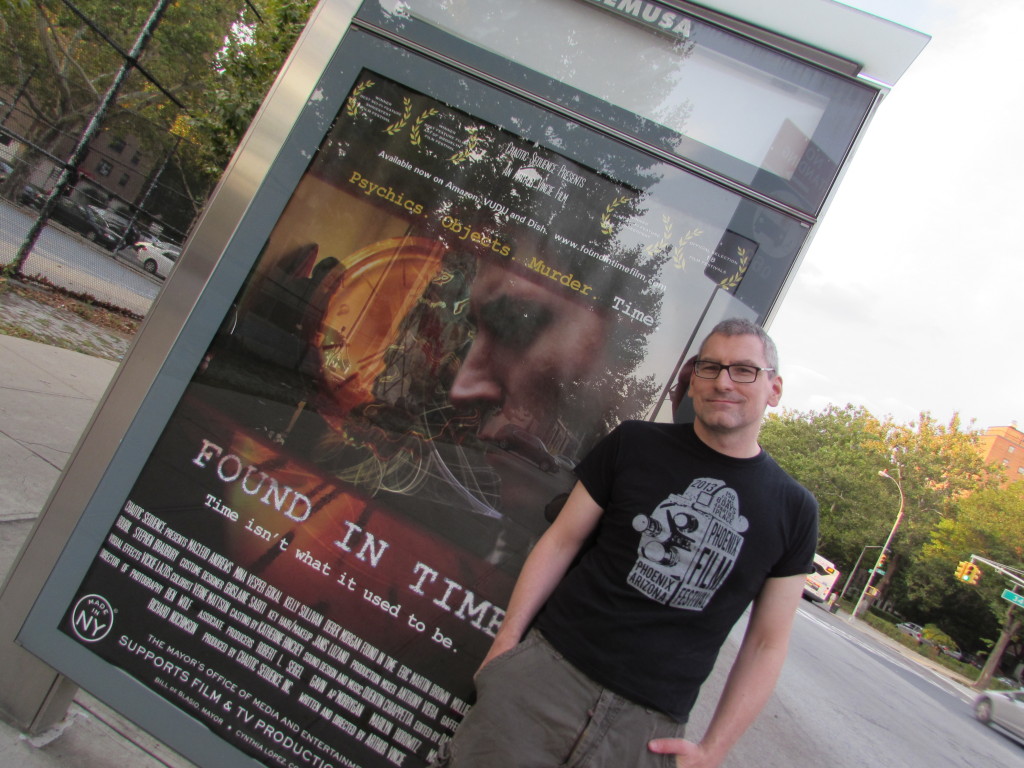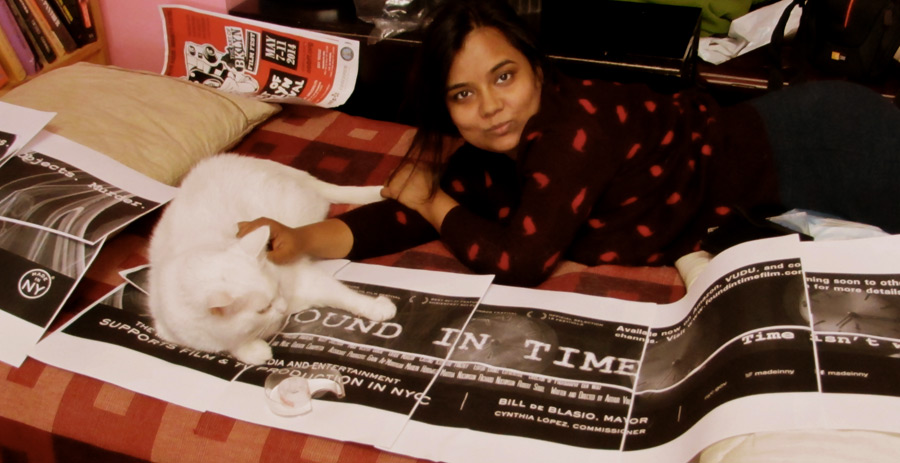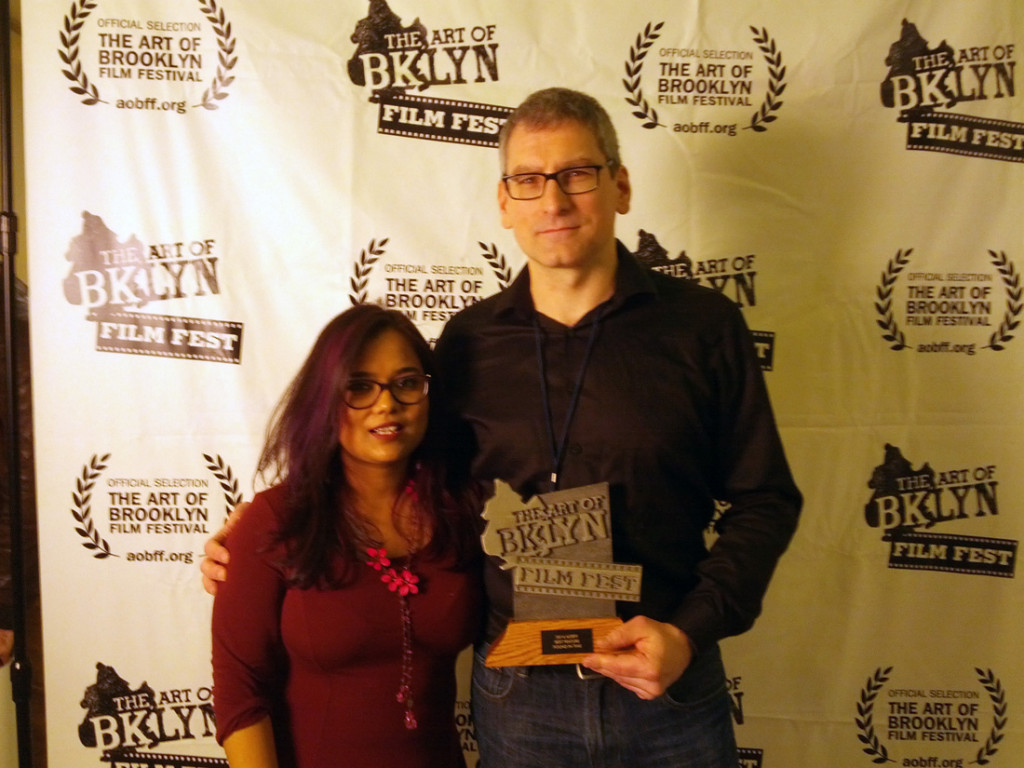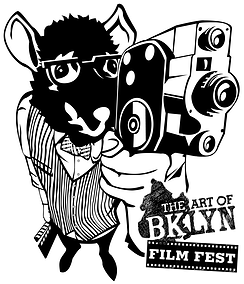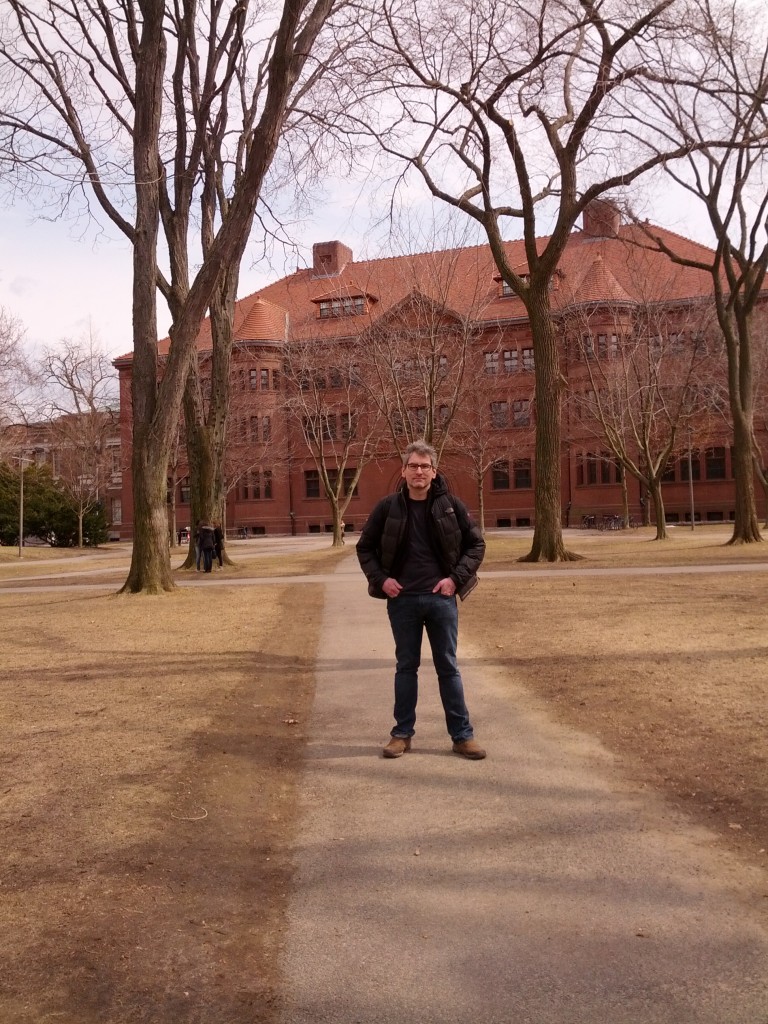Marx Pyle, multi-talented producer, writer and director, interviewed me for his ongoing sci-fi/fantasy/genre podcast, GenreTainment!. We talked about Found In Time, indie filmmaking, and upcoming projects. Have a listen:
Tag Archives: Found In Time
When Is the Director Done?
Found In Time has just been released on Amazon, and user reviews are starting to come in. They confirm something that all of us suspected from the beginning – that this was a film that would divide audiences. Those who were expecting something more straightforward would be frustrated; those who could deal with more ambiguity would be happy. There’s nothing inherently good or bad about either attitude, by the way. Ambiguity can be a terrible thing (see Prometheus).
We’re still waiting on some festivals to get back to us, and our foreign sales rep, Summer Hill Films, is taking it to Cannes next month. We’re also still exploring other domestic distribution options – DVD, BluRay, and a soundtrack album.
But most of that is the work of the producer, at least in theory. At what point is the director done with a film? Is it when it’s wrapped? When post is finished? When it’s out at festivals? When it’s available online or in stores? The producer is on for the whole ride (unless the producer is only working for hire). What is the director’s role in this brave new world of the artist/entrepreneur?
J. Michael Straczynski, the creator of the tv series Babylon 5, somehow managed to write most of the 100+ episodes, EP the show, supervise the sound mix, run the online forums on AOL (hey, it was back in the day), and then went on to write follow-up movies, supervise comic and novel adaptations, and answer fan mail. At what point did he say ‘I’m done?’ The show went off the air sometime in the late 1990s but still has a loyal following. Until Firefly and Battlestar Galactica came along it was the gateway drug by which I introduced my non-geek friends to sci-fi. Does he still feel as connected to the show as he did all those years ago?
I’m wrestling with this issue now because I’m in the process of getting back into the director’s chair again for Bitter Child, but I don’t want to abandon Found In Time just at the moment when people are starting to see it. It’s been part of my life so long that I’m not even sure how I would go about leaving it… and yet whenever I work on Bitter Child part of me feels guilty. It’s an odd conundrum, and very different from what I’ve faced before.
By the time my first film, Caleb’s Door, was finished, I was really ready to be done with it and get on with the next project. That was a hundred internet years ago, when social media was just gaining traction and distributors were starting the now-familiar pattern of picking up films for a song and then putting them out into the marketplace with little if any promotion. The idea of the filmmaker taking up the promotion baton was seen as counterproductive (except for documentaries). Festivals were the main avenue for promoting a film.
I moved on to another project (which fell apart), then onto Found In Time. And the funny thing is, that while there are a lot of books out there on how to make your film, there are fewer on how to finish them, even fewer on how to distribute them, and none that I know of about how to do whatever happens after distribution. So I never really went through this before.
I can tell you that it’s a difficult process emotionally to untangle oneself from a project once its “finished,” and make plans for its entry into the world. Whenever I read the negative reviews, I wonder if I’ve made the film too inaccessible or too vague. Or I think that the marketing is off. Or I wonder if there’s a more ‘targeted’ distribution avenue out there.
Working on Bitter Child (and my television project, The Spectral City) is great, but it adds to the tension somewhat. It’s hard to work on more than one project at a time and give each one the proper attention and energy. And with The Spectral City, some more early-stage projects, and the need to make a living all jostling for attention. keeping sustained focus on any one thing can be difficult.
I still wake up every day happy to be in a position to make films and write and express myself, so don’t get the impression that it’s all doom and gloom. My grandparents and parents never had a chance to really pursue their artistic passions as fully as they would have liked. So I’m very lucky. This feeling of uncertainty about what my role is in regards to Found In Time – beyond being a sort of internet-age carnival barker (or wheatpaste band poster brigadier) – is something that’s akin to being a parent, I guess. We’ve raised the kid, and now it’s time to let it go and take on a supporting role in its life.
Happy 2015
VIDEOLOGY SCREENING
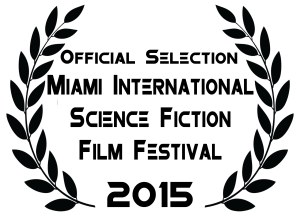
As a fitting start to 2015, we’re returning to Brooklyn for a free screening at Videology! Join us on Monday, January 5th, @ 10pm at this unique bar/video store/screening room in the heart of Williamsburg (308 Bedford Ave, Brooklyn, 11211). For details and RSVPs hit up the Facebook event page.
MIAMI SCI-FI
After that you can catch the film at the Miami Sci-Fi Film Festival! It will be screening Friday evening, January 23rd, at the beautiful beach-side Regency Hyatt. For details and tickets, visit Miscifi.com!
2014 IN REVIEW
As 2014 draws to a close, we salute all the wonderful people we’ve met along the Found In Time journey. Our family, friends, cast, crew, location owners, vendors, fans, festival programmers and staff, distributor staff… it takes a city, never mind a village.
This was a year of promoting and delivering the film, which has proved to be nearly as much work as making it was. We did a lot of research on promotion and publicity, and scored some great interviews and reviews – in “Starlog”, in Sci-Fi Saturday Night. We brought home four more awards, from Art of Brooklyn, Intendence, and Phoenix Comic-Con. We had some special screenings in non-festival venues – conventions, sci-fi meetup groups, and college campuses. We signed up with a foreign sales agent, TomCat Films. Our domestic distributor, Green Apple, worked tirelessly with us to get the film ready to go out on all the various platforms.
It was also a year of new beginnings. Every producer, at some point during a project, begins to yearn for something new. I certainly did. This year we launched two new projects – a supernatural war mini-series, “The Spectral City,” and a low-budget supernatural thriller, “Bitter Child.” While “Bitter Child” may get made first, we’re going to try a different approach – keeping two projects in the air at once.
We also – at Chaotic Sequence – expanded our efforts at film education. We’re still pushing my book on preproduction, Preparing For Takeoff, and pairing it up with one-day seminars on film prep. We’ll be doing more one day seminars in 2015 – on preproduction, visual storytelling, and more.
WHAT WE LEARNED
Probably the hardest part of 2014 was keeping so many irons in the fire – two projects in development, a book and workshops to push, a film to deliver and promote, and the everyday grind of making a living at budgeting, writing, teaching, and consulting. I’m at a point where I need to make some decisions as to how much effort to put into which projects, while having to acknowledge that I can’t do it all. So one of my goals for 2015 is to DIWO – Do It With Others. “Found In Time” was a wonderful collaborative experience. Now I need to replicate that on a larger scale.
Have a great new year!
VOD And Screenings!
NOW AVAILABLE ON VIMEO ON DEMAND and VUDU!
NEXT SCREENING:
Louisville International Film Festival, Saturday Oct. 11th 2:30pm
Holly Theater – Galt House Hotel: 141 N Fourth Street, Louisville, KY 40202
More Info: louisvillefilmfestival.org
More channels, screenings, and news coming soon!
Three Weeks From Release…
Some cool things are happening.
Awards!
We won the Best Sci-Fi Feature at Phoenix Comicon, and Best Sci-Fi and Best Audience Sci-Fi awards at Intendence Film Festival! Thank you to Intendence and Phoenix Comicon!
Made In NY Marketing Campaign Ad
We qualified for the Made In New York Marketing program, which means NYC will print and put up 250 subway and 20 bus shelter ads for our film – at no cost! Here’s a pic of our team looking over a rough copy of the subway poster:
Screenings
We’re organizing some non-festival screenings in September, October and November, timed to the release of the film. Stay tuned and we’ll keep you posted.
I know we haven’t written a ‘how-to’ or diary entry in a while. Things are a little hectic right now. We’ll post more in-depth pieces in a short while.
We’re at Intendence!
Quick news update: Found In Time will screen on Friday night at 8pm at the Intendence Film Festival in Denver. Details:
Friday 8pm
700 Kalamath Street, Denver, CO.
Visit intendence.org for details/tix. Looks like it’ll be a great festival, so get a weekend pass and check it out!
BaltiCon! And Post-AOBFF
We got into BaltiCon! This is Maryland’s biggest sci-fi/fantasy convention, running from May 23-26th. This is four days of workshops, cosplay, films, singing, gaming, author panels, and lots more! Details:
WHERE: Hunt Valley Inn, 245 Shawan Road, Hunt Valley, Maryland 21031
WHEN: Sunday, May 25, 9:30am in the Garden Room
TICKETS: Balticon.org
Art of Brooklyn Film Festival Round-Up
The Art of Brooklyn Film Festival was, in short, quite wonderful. Their claim is that it’s run by Brooklyn filmmakers for Brooklyn filmmakers, and they deliver. The screenings were organized into blocks that made sense, the pairing of shorts and features worked well, the communication between the festival staff and the directors and producers was great… and the overall atmosphere was joyous.
Cast, crew, fans, staff, and industry folk mingled pretty freely, both during the pre-screening receptions and at the nightly after-parties. It was, of course, great to be able to commute to a festival as opposed to taking trains, buses planes, and automobiles. But the venues themselves were also easy to get to by subway and a lot of care was taken to make sure the projection and sound quality were up to par.
So, here are a few really quick ‘snapshots’ of the films I saw. There wasn’t a bad one in the bunch, but I’m trying to write this quickly and I didn’t get to everything, so I apologize in advance if I don’t mention a few films (hopefully I get a little more time to write a follow-up piece).
Shorts
The first set of films I saw were part of a shorts block on Wednesday, May 7th. These things are often a very mixed bag, with one or two standouts and a very pretty terrible pieces, or others that simply don’t relate thematically to each other very well. So imagine my surprise when every damn short worked well and flowed naturally into the next one.
One of the qualities all the shorts had was their restraint. There wasn’t an extraneous line of dialog, an out-of-place trick shot, or a distractingly flamboyant performance in the bunch. The show/tell ratio was perfect in all of them.
Inquietude (directed by Morgan Davidsen): This was a really tense short film about a dancer who’s at a particular crossroads – she’s broke, desperate for a break, losing both her apartment and maybe even her mind. There are only a handful of lines of dialog in the whole film. Unlike flashy crap like Black Swan, you really feel for the character. Fun fact: the film was shot several years ago but the audio was lost and had to be recreated. Perhaps this lends something to the sparseness of the film as well?
Without Fire (directed by Eliza McNitt): A single mother and her daughter struggle with poverty, no heat and little hope on a Navajo reservation house in the middle of the desert. But the girl has an idea about how to get heat… The director, cast, and crew did an amazing job of conveying the depths of the story, the stakes, the resourcefulness, all with a bare minimum of flash, some great music and sound design, and terrific performances.
An Honorable Man (directed by Harrison P. Crown and William G. Utley): This won the best short award, and for good reason. A cynical, older priest shows up to give a eulogy, but no one’s showed up for the funeral. If this sounds like a downer, I assure you it isn’t. It’s funny, tragic, wonderful, and hangs entirely off a few well-placed camera moves and the priest’s performance.
The next block I saw was on Thursday night just before the Found In Time screening. Again, a wonderful selection of films – that all fit well together – so I’ll just mention a few here.
Armed Defense (directed by Irina Patkanian) is a mysterious, quiet short. A man walks into a house – is it his? We don’t know – and he’s not talking. He starts arming himself, setting up defenses. Against what? It’s a great film because it doesn’t supply all the answers, but perfect captures a mood.
Kosmodrome (directed by Youcef Mahmoudi) was the definition of trippy. It’s a story about a young psychic woman who’s being brainwashed by a another psychic (working for the KGB) to kill the head of NASA. It’s got a ton of ideas and somehow captures the its subject perfectly. I’d love to see a feature version of this.
Sci-Fi Block
Found In Time was part of a sci-fi block that started later that night, that included two well-done shorts, The Dahl House (directed by Jason Markowitz and Zac Grant)and Hole (directed by Brian McCann).
The Dahl House is about a family that seems to be living in an underground bunker. But the son is having trouble making friends. Can dad help him out? It’s a Walt Disney meets Twilight Zone film. This was really well-made – it’s inventive, shows rather than tells, and has a great twist. It also features some really nice performances and has a great, lo-fi look to it.
Hole is about a young, rational, realistic guy who suddenly finds himself in the middle of either a quirky string of coincidences or a web of interconnected, suspicious events. It’s another film that shows rather than tells, has some understated, winning performances, and is really well shot and edited.
Both of these films treat the audience like adults, and the filmmakers were a lot of fun to hang out with as well. I wish them a lot of luck on the festival circuit!
A Break… And Indigo
After three days of film watching, networking, and hitting up the after-parties, I had to take a break. But we came back to hit up the “Dark Side” screening block.
Indigo (directed by John Hawthorne Smith) was a really great tragic thriller. Eli Casey is an up-and-coming photographer, happy husband and father, and recovering heroin addict. When his son is kidnapped, his whole life falls apart, and his old habits start getting the better of him. He tries to battle both his inner demons and figure out the mystery of his son’s disappearance. This is a heavy film, but NOT a downer. It’s a well-acted, well-directed film, takes its time, doesn’t try to rush the scenes, and builds up the dread.
CONCLUSIONS
This has to be one of the best fests that we’ve been to, in terms of the quality of the films, the dedication of the staff, and the good vibe of the fans and fellow filmmakers. Can’t wait to come back next year and soak in the films as an audience member!
Best Feature at Art of Brooklyn Film Festival!
What a fantastic end to a great festival! We will post a round-up of all the wonderful films we just saw and the cool people we met in the next couple of days. In the meantime, a big thank you to all the staff, fans, fellow filmmakers, and our own family, friends, crew, cast, and (especially) loved ones who made this possible!
Art of Brooklyn Film Festival Screening!
Just a quick reminder that we’ll be screening at the Art Of Brooklyn Film Festival!
WHEN: Thursday, May 8th, 8pm (reception) / 9pm (screening starts)
WHERE: St. Francis College, Founders’ Hall, 180 Remsen St., Brooklyn, NY
TICKETS: $10 for the evening – includes the reception, 2 shorts, Found In Time, and a Q&A!
MORE INFO: AOBFF Page
I’ll be there with DP Ben Wolf, editor Dan Loewenthal, costume designer Ghislaine Sabiti, and other crewmembers for a post-screening Q&A!
Six Things I’m Learning About Distribution
#6: Don’t Bother With The Top-Tier Festivals.
I wasted a lot of time – nearly six months – sending the film out to “A-List” festivals. These are the ones that everyone wants to get in – Sundance, Berlin, Toronto, Berlin, Cannes, and Tribeca. I applied to three of them (Sundance, Toronto and Berlin), but really I should have started with the sci-fi/fantasy/horror festivals and targeted them instead.
While it’s always a “nice idea” to premiere at Sundance, the time you spend waiting to hear from them – during which you can’t really apply to any other festivals that may screen beforehand – is time you could be spending on other things. Unless you know for a fact that you can really get into Sundance or one of the other fests, don’t wait for them to pass on you – go find another festival premiere that may better suit your material anyway.
In my case, Shriekfest was happy to premiere my film, and I screened in front of a great, appreciative audience. I also got a lot of press coverage from the screening, was treated really well by the staff and fans, and my LA-based cast were able to see the film as well. I even won an award! If I’d premiered at Sundance earlier that year, I would have been competing with much bigger fish with budgets for publicists and wine-and-dine parties.
#5: Figure Out Your Genre.
I initially thought my film would appeal to indie-types because it’s a little on the experimental side, and fantasy fans, because it’s not really “hard” sci-fi. I called it a “fantasy” film. I consciously avoided the terms “sci-fi” or “science fiction” whenever possible because I didn’t want my film to be compared to other higher-budgeted, effects-driven films.
I was wrong on both counts. The people who liked my film were sci-fi folks. The crew, cast, and early viewers all called it a “sci-fi” film. The festivals that accepted it first: sci-fi/horror fests. The people who seemed to hate it the most (judging by distributor and festival rejections) – the “indie crowd.” I think “Found In Time” hit the market at the same time as a crap-ton of weepy 20-something-let’s-figure-out-our-relationship-bastard-son-of-mumblecore movies hit the market, and those are what played at SXSW, Tribeca, and Rooftop the past couple of years. Some of these films are great, by the way, but they’re not what I made.
If you’ve made a movie, try and figure out where it “belongs” in the genre universe as soon as possible, so you’re not wasting money and time sending it out to festivals, sales agents, and distributors who really don’t know what to do with it. And yes, drama and comedy are genres.
#4: Don’t Make Your Artwork Too Specific:
I printed up my first batch of postcards to indicate the Shriekfest screening time and location. This was dumb. It made it almost impossible to re-use those cards. I had to cut out custom-sized labels with the Eerie Horrorfest times on them, then carefully stick them over the Shriekfest screening times.
#3: Sometimes The Screening Isn’t Going to Be Great.
The projector’s too dark, the sound system is a rusty tin can with string, the attendance is down, there’s a blizzard outside, your screening time is at 9am, there’s a huge racket outside… you can only control so much about your screening, and then you have to let it go. DON’T let your anger show, or take it out on the staff or the audience. Treat the staff and audience with the same respect regardless of their size or the conditions. Some of the best screening experiences I had were when five people showed up. Those five people held a Q&A with me for an HOUR after the film. Those are the fans you should kill to have.
#2: Try to Avoid Online Screeners.
I still firmly believe that DVD and BluRay offer a superior viewing experience, if for no other reason than they require the sales agent/festival programmer/distributor to actually sit down, put the disc in, and watch something. Especially now that net neutrality in this country is about to be toast, I don’t want my film being choked to the point of unplayability, or competing directly with the viewer’s other twenty browser tabs.
#2: Transparency Works Better Than Opacity
The prevailing wisdom back when I got out of school was that you kept your cards close to your chest – your budget, your plans for the film, your premiere status, etc. You didn’t want your film getting stale, so you listed it on IMDB much later in the process. You didn’t want your ideas stolen by competing filmmakers, so you didn’t reach out to them. You didn’t tell your fans what you were up to, as a means of building suspense.
The truth is that telling people what’s going on with the film – especially the cast and crew – at each step of the way has been a great help. It’s kept us all together like the happy family we were when we were shooting. Putting up set photos, listing the film on IMDB, setting up the Facebook page, reaching out to other filmmakers at festivals, comparing notes – it’s all been a great experience and I think has only helped us find a bigger audience. I’ve also had a much better time. I still think that you don’t want to tell people your budget unless it was so low that that’s actually part of your marketing. However, explaining your process, how you shot it, what your successes and failure during the production and post were, can only help you stay connected to your audience, your cast, your crew, and the larger filmmaking community.
#1: Make the Film With The Assumption That You’re Going to Self Distribute.
When I started making Found In Time, finding a distributor still seemed like a good idea, so I budgeted so as to pour as much money into the making of the film as possible. I’m happy with my distribution deal, and I still think that finding a “traditional” solution makes sense if you’ve crossed a certain budget threshold.
However, for super-low-budget films, direct or hybrid distribution models make more sense and will net the filmmaker more money and exposure than waiting forever to get a deal with no advance. You just have to adjust your budget accordingly, and spend more of it on the end of the process rather than on the beginning. But this also frees you to work on your own timetable. Get some buzz from festivals, sell DVDs directly, then find a streaming solution that works. You have to spend more time on distribution, but you’ll learn a lot along the way.
I’m learning more every day! The beauty and difficulty of this strange art/business form we’ve chosen is that there’s always more to figure out. Got a different opinion? Let me know!

